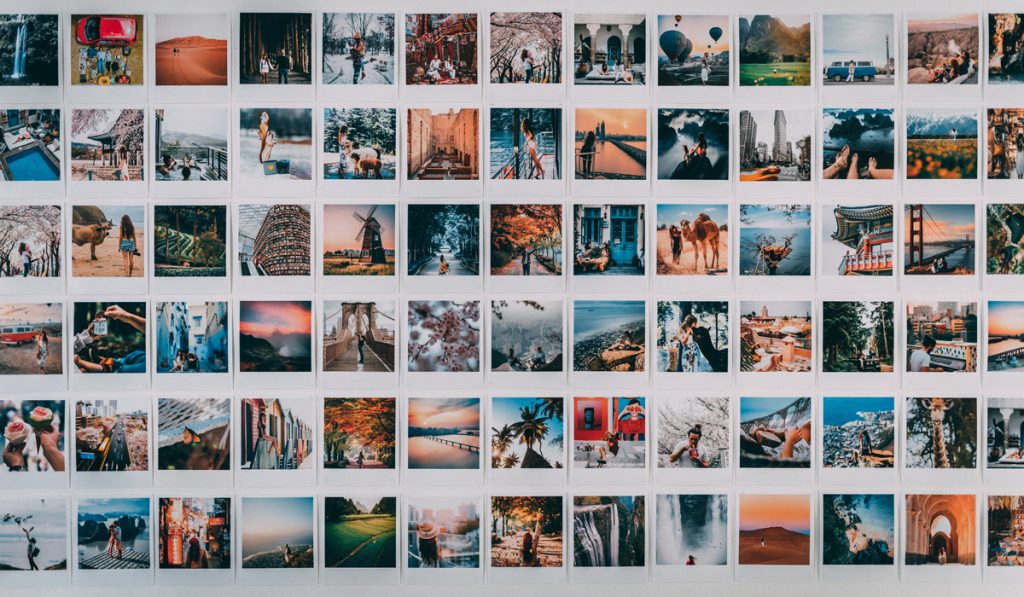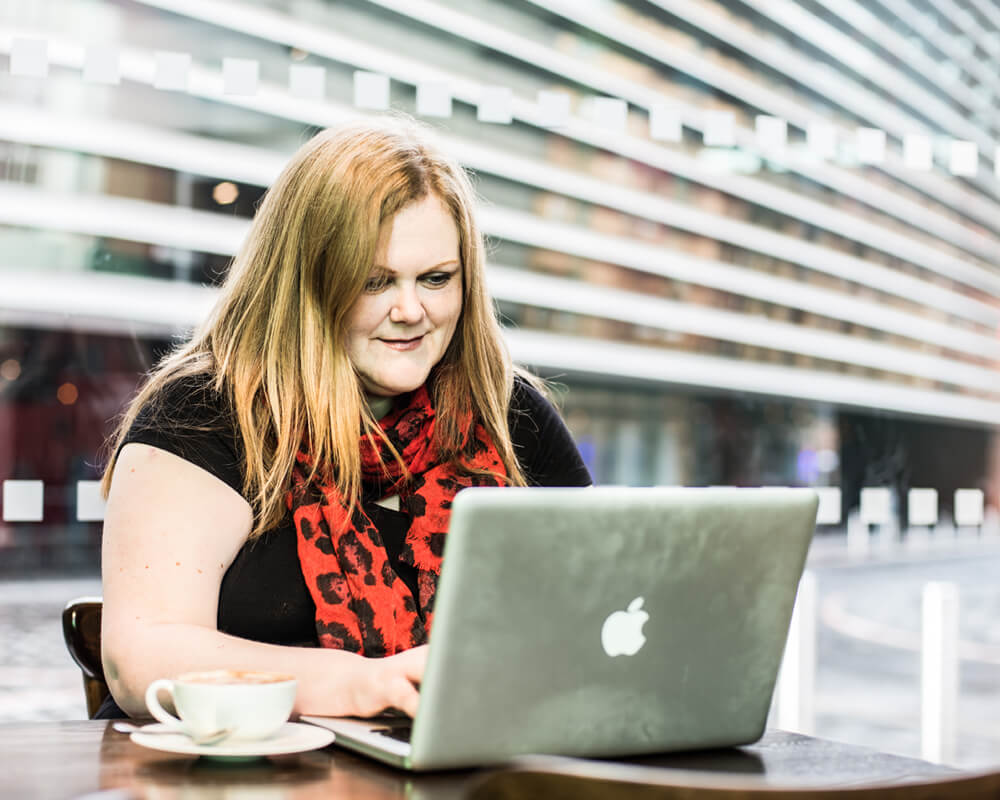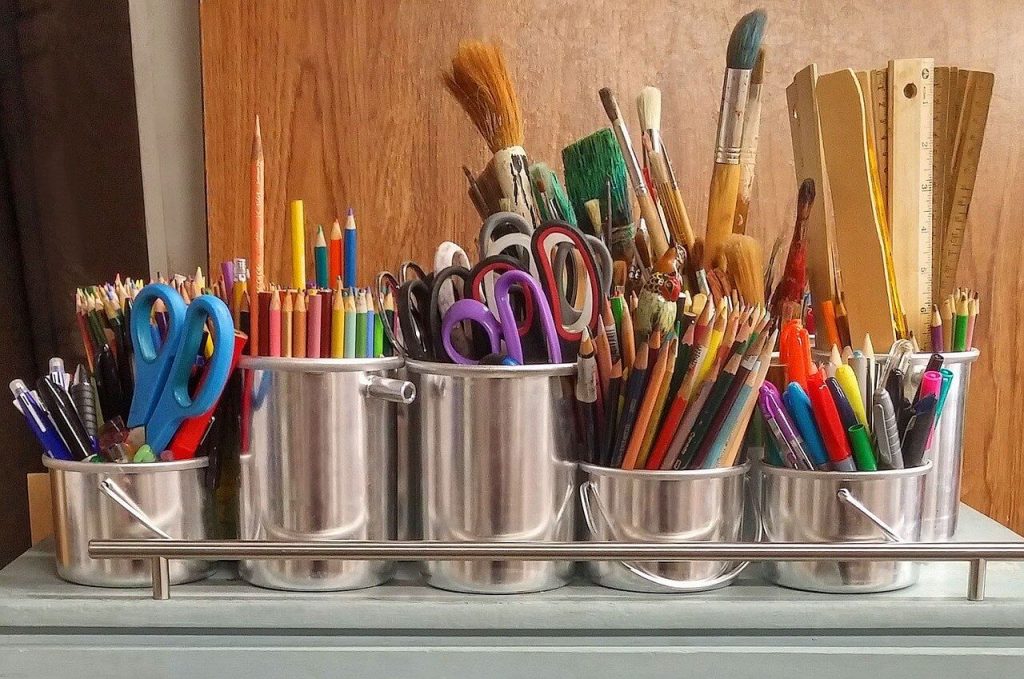Look at this picture ⬆️
Beautiful, isn’t it?
I mean, it has nothing at all to do with choosing images for your website. But it’s nice to look at — and people like having nice things to look at.
Don’t they?
Well, yes, they do. But they also like to be sure, when they land on your website, that they’ve come to the right place.
An image that doesn’t represent you, your company or what you do, can throw potential customers off — especially if the description of what you do is equally unclear.
Images are important
You might think the images you choose are just window dressing, so it doesn’t matter if they’re relevant or not. But they’re actually contributing to the user experience by helping potential customers build up a picture of your brand.
Images are more instant than text and are the first thing your visitors will notice when they come to your site — before they’ve had a chance read anything. So, ideally, they should create an impression.
“But our business is boring”
You might be thinking, ‘Well, that’s okay if you have a creative or product-based business that’s very visual. But what if you have a software company, accounting firm or other service-based business? The only pictures for those businesses are generic images of offices and people at computers.’
This is where you need to think differently. Because it’s possible to come up with something more interesting and original, if you open your mind a little.
You need to think differently
With a little imagination, you can take a different approach to choosing your images.
Here are some alternative things to think about.


Illustrate the problem you solve
What problem do you solve for your customers? Is avoiding this problem the main thing that will motivate your customers to buy? And is the problem something that could be presented visually?
Example: The IT company
A company I worked with scanned and indexed its clients’ paper data and stored it securely in the cloud, where it could easily be accessed.
One of the main problems their customers had was an overwhelming paper mountain. Important paper records that needed daily management and took up a lot of storage.
I started thinking about a worker drowning in paperwork, or whose office had been completely taken over by stacks of papers and filing cabinets. There were countless other problems we could have targeted, but the storage issue would have been easiest to illustrate and would have the most immediate impact.
This would make an interesting image that would grab attention, illustrate the problem and be relevant to the business.
Illustrate the benefits you provide
What are the benefits of your service to your customers? Are these benefits the main selling point of your service? And can they be represented in an image?
Example: The financial advisor
One of the main things a financial advisor helps with is pensions and financial security for later life.
With the right line of copy, you could show someone of retirement age, who’s financially secure and actively enjoying their retirement by:
- Playing a round on the golf course
- Enjoying a restaurant meal with friends
- On a cruise, or boating
- Travelling somewhere new.
Example: The accountant
There are many small business owners for whom accounts are a necessary evil. Stressful, time consuming and definitely not their favourite thing to do while running their business.
If you’re an accountant, who can take care of all that stress, why not illustrate this?
With the right line of copy, you could show a business person who, because of your service, is:
- Having a good night’s sleep
- Enjoying family time
- Finding time for their favourite hobby.
Use your personal branding
Using your branding is a way to inject personality and creativity into your images. Think about what your brand stands for. Is it fun and friendly or classy and sophisticated? These things can come across in the images you choose.
There are several ways to make your brand more visual. Here are a couple of examples.
A personal branding photoshoot
If you’re the face of your brand, why not organise a personal branding photoshoot and use photographs of yourself?
It doesn’t have to be a series of flat studio portraits in front of a screen. With the right branding photographer, you can be creative, using a range of themes and environments to show the different sides of you and your business.
You can also incorporate other interesting elements of your brand. For example, featuring your brand colours in your backdrop or clothing. Or including your office dog.
Or if you’re camera shy…
Although I have done a branding photoshoot, I was never going to be comfortable with a website plastered in pictures of myself — however good they were.
So my website is filled with images of my brand mascot: a 3D rendered blue bird carrying a yellow pencil. I deliberately chose a visual brand that would make me stand out from the crowd and be memorable.
Hire an illustrator
If you want a unique, stylised and consistent look for your website, you could hire an illustrator and ask them to draw each element.
There are lots of illustrators out there and they all have different styles, so look at their portfolios and find one who suits your brand.
Use the right accompanying copy
Putting words and pictures together creates more powerful and conceptual communications.
Taking this approach allows you to be more creative with the images you choose, because the words will clarify the meaning.
Tips for choosing your images


Make a connection
Put your audience’s needs first. Choose images that make a connection with them and which they can relate to.
The best images to connect with a human audience, unsurprisingly, include humans — and, ideally, humans that mirror the target audience for what you’re offering.
People typically respond best to images that make them feel something. Whether that’s a good or bad feeling will depend on what’s most likely to sell your business.
Create value
Make sure there’s value for your audience in the images you choose. Ideally they should support your message, providing clarity and understanding rather than just looking pretty.
Make a statement
If you want to create a strong, memorable aesthetic, go for:
- Bold solid colours
- Interesting images
- A clear focus point to draw you in.
Be careful with stock images
There are lots of stock image sites online. Some of the premium sites feature strong, creative images that are designed to make a statement and could be perfect for your website.
But — and there is a but — if you’re using stock images, there are some things you need to think about.
They’re not exclusive
Stock images are available for anyone to download and use, which means other companies — maybe even your competitors — could be using the same images.
If you want to be original, consider hiring a photographer or illustrator instead.
They can misrepresent your business
You know those stock images with the perfectly turned out employees? The ones with the big shiny smiles, who work in impossibly swanky glass-walled skyscrapers?
Images like these are obviously staged and always make the business look fake and disingenuous. Trust me — this is not how you want to come across to your customers.
You need to check the licence
The licensing of stock images is variable and it may carry certain restrictions. You need to check this carefully before you choose or download images and make sure the licence for those images is suitable for your needs.
Don’t scrimp on quality
Use large, high-res images that will scale up beautifully and still be sharp — even on a huge desktop screen. And remember to optimise them properly so they don’t slow down your site.
Make sure your images are legitimate and paid for — not just watermarked placeholders. Designers often use low-res composite images while the design is in progress, but they sometimes forget to replace those with the proper images before it goes live.
Do you need some help choosing images?
I’m Jenny Lucas, a creative copywriter with 12 years’ conceptual copywriting experience, including picture research and idea generation.
If you need help finding the right images for your website or blogs, I offer picture research as part of my service and would love to help you.
If this sounds like something you need and you’d like to find out more, please get in touch for an informal chat about your needs.


You might also like…






